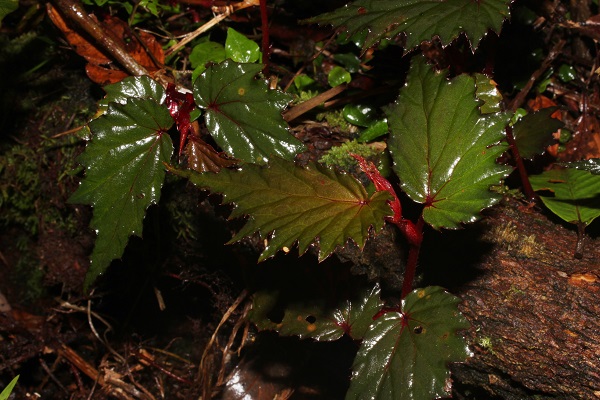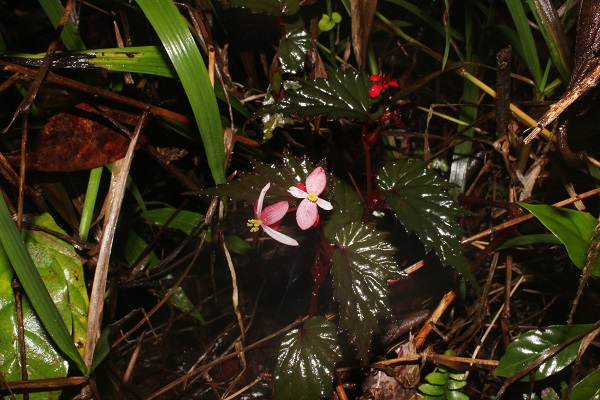With about 2,039 accepted species, Begonia Linnaeus is one of the largest genera of flowering plants which are distributed in tropical and subtropical regions of the world.
During field work on the taxonomy of the genus Begonia for the island of Mindanao in Philippines, researchers from Xishuanbanna Tropical Botanical Garden (XTBG) and their collaborators collected an unknown material belonging to Begonia sect. Petermannia in Bukidnon province.
After meticulously examining all relevant literature and comparison of available digitized type specimens for the genus Begonia sect. Petermannia, the researchers confirmed it as a new species and named it as Begonia olganunezae in honor of Professor Dr. Olga M. Nu?eza, an eminent professor and scientist in Mindanao State University.
The new species was published in Taiwania.
Begonia olganunezae is a perennial monoecious, terrestrial herb. It is morphologically allied to B. affinis and B. bangsamoro , but differs significantly from B. affinis in having a sparsely strigose stem, lanceolate stipules, longer, sparsely to densely strigose petiole, narrowly ovate to ovate leaves with 7–8 majour veins, and glabrous ovary. It differs from B. bangsamoro in having lanceolate, glabrous stipules with cuspidate apex, staminate flowers with broadly ovate, rounded apex outer tepals and canaliculate inner tepals, and glabrous ovary.
The new species is endemic to Mindanao, southern Philippines. It was found growing as terrestrial under a close to semi-open canopy in the montane forest with a cool environment between an elevation of 1000 to 1600 m above sea level.
Flowers and fruits were observed in May, June, November and December.
Contact
Mark Arcebal K. Naive
Center for Integrative Conservation, Xishuangbanna Tropical Botanical Garden, Chinese Academy of Sciences, Menglun, Mengla, Yunnan 666303, China
E-mail: arciinaive19@gmail.com
Begonia olganunezae (Image by Mc Arthur Cababan)
Begonia olganunezae (Image by Mc Arthur Cababan)
Begonia olganunezae (Image by Mc Arthur Cababan)
Begonia olganunezae (Image by Mc Arthur Cababan)




